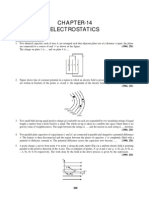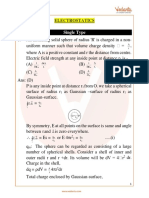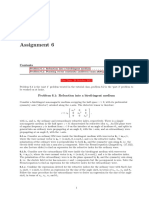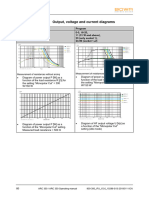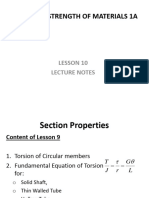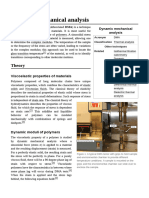0% found this document useful (0 votes)
75 views12 pagesApplied Physics Unit 3 Objective Question
The document contains 13 multiple choice questions about electrostatics concepts. Some key points:
- A positively charged particle moving in a uniform electric field will decrease its potential energy, as it moves in the direction of the field (Question 1).
- The work done by an electric field on a charged object moved between equipotential lines is the same regardless of the path taken (Question 2).
- Equipotential surfaces far from a collection of charges are approximately spherical (Question 3).
- No work is done by an electric field when a charged object is moved along an equipotential surface (Question 6).
- The potential inside a hollow conducting sphere is uniform and equal to the potential
Uploaded by
Nitin YogeshCopyright
© © All Rights Reserved
We take content rights seriously. If you suspect this is your content, claim it here.
Available Formats
Download as PDF, TXT or read online on Scribd
0% found this document useful (0 votes)
75 views12 pagesApplied Physics Unit 3 Objective Question
The document contains 13 multiple choice questions about electrostatics concepts. Some key points:
- A positively charged particle moving in a uniform electric field will decrease its potential energy, as it moves in the direction of the field (Question 1).
- The work done by an electric field on a charged object moved between equipotential lines is the same regardless of the path taken (Question 2).
- Equipotential surfaces far from a collection of charges are approximately spherical (Question 3).
- No work is done by an electric field when a charged object is moved along an equipotential surface (Question 6).
- The potential inside a hollow conducting sphere is uniform and equal to the potential
Uploaded by
Nitin YogeshCopyright
© © All Rights Reserved
We take content rights seriously. If you suspect this is your content, claim it here.
Available Formats
Download as PDF, TXT or read online on Scribd
/ 12





